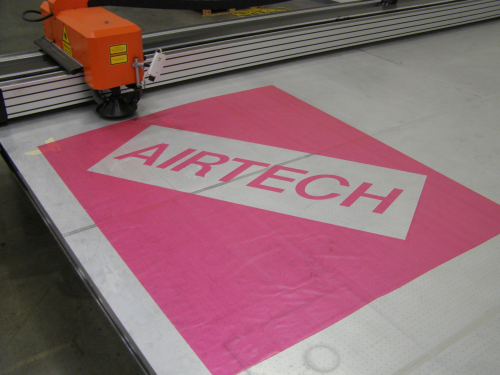
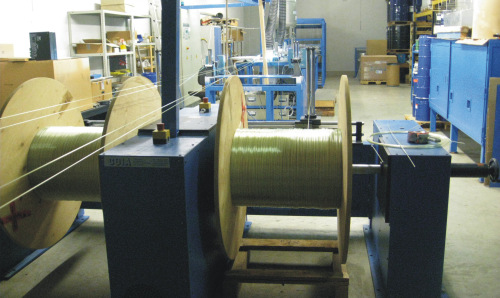
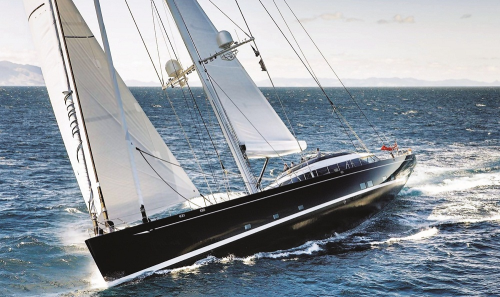
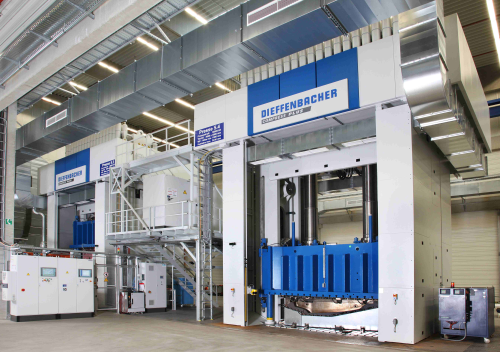
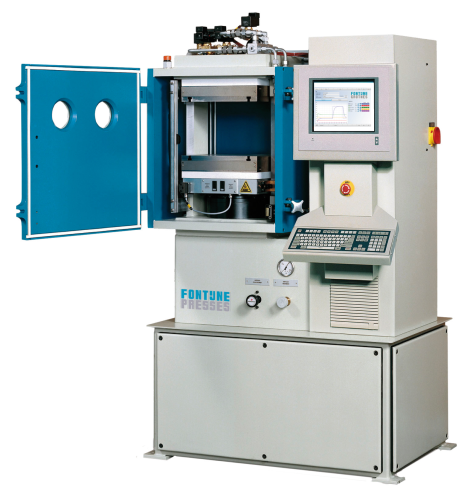
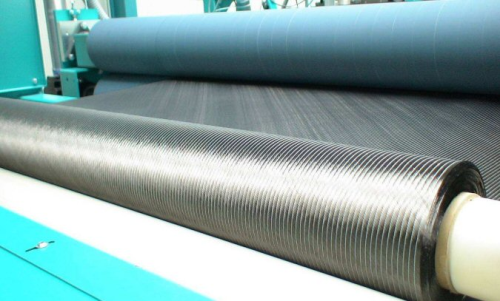
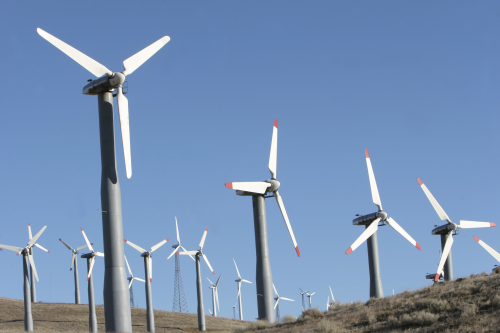
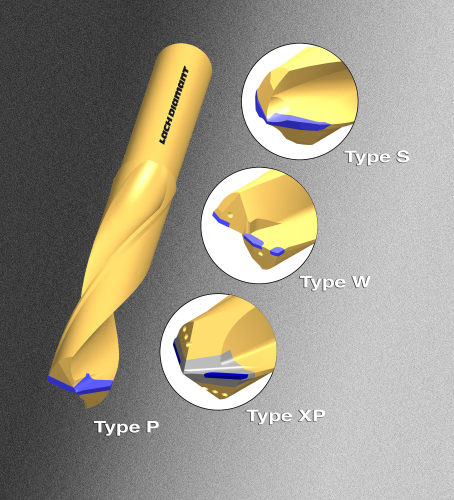
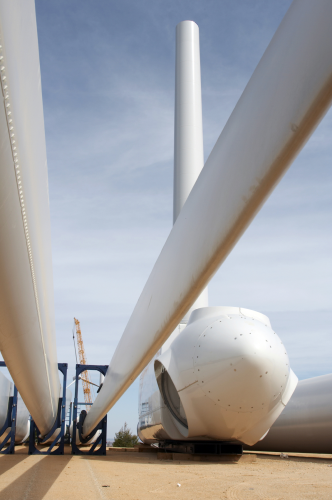
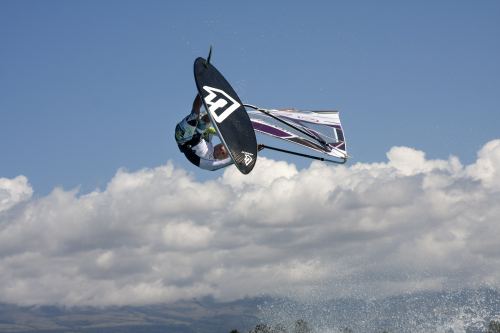
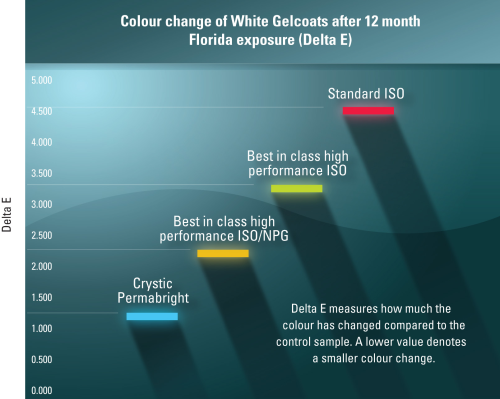
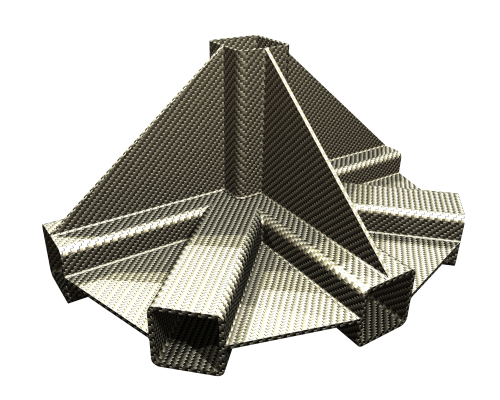
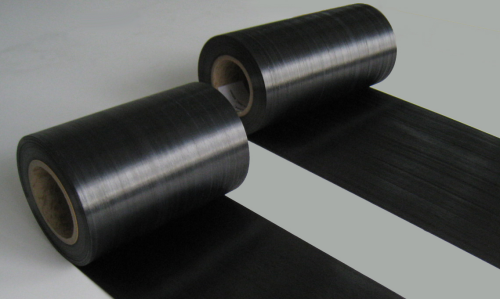
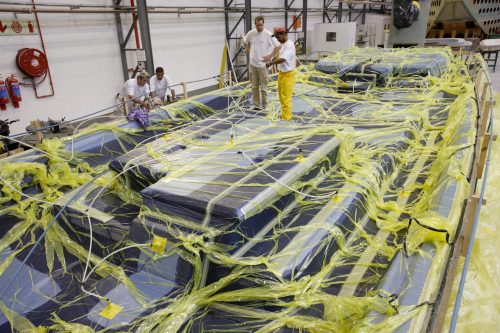
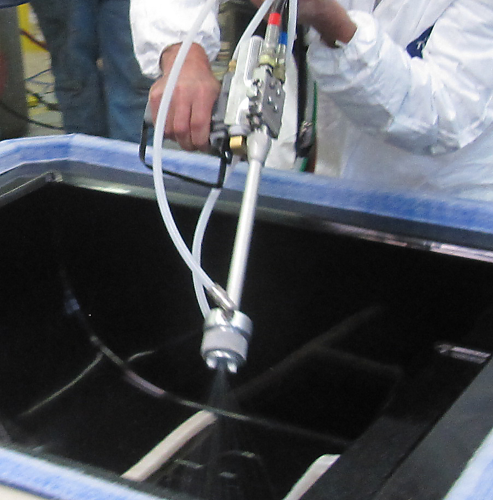
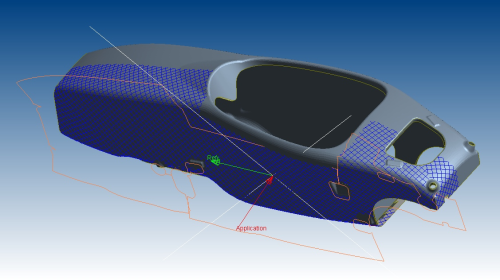
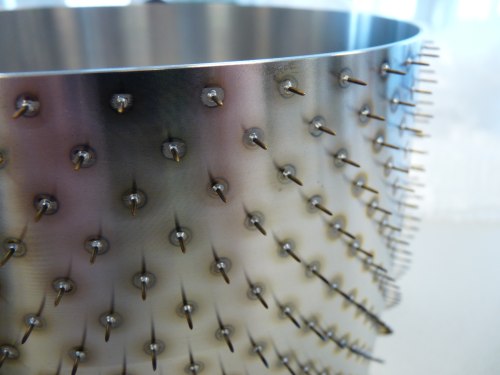
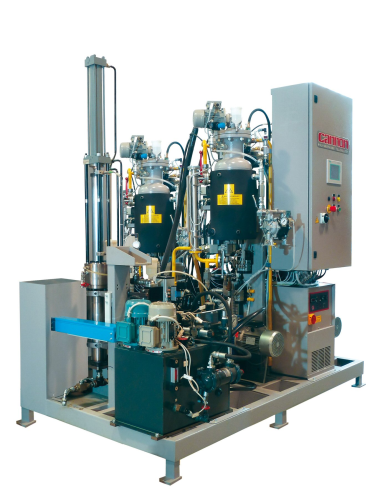
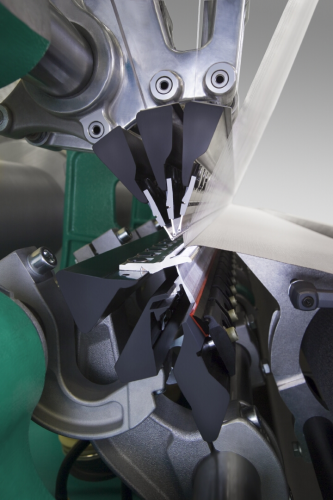
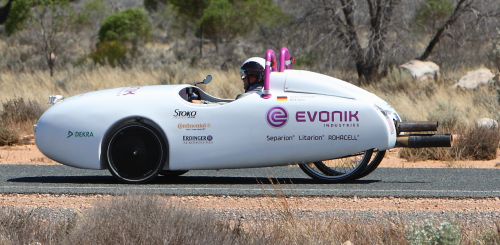
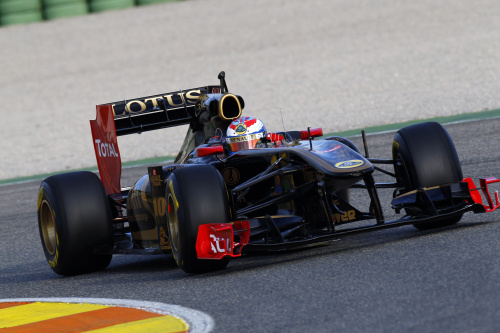
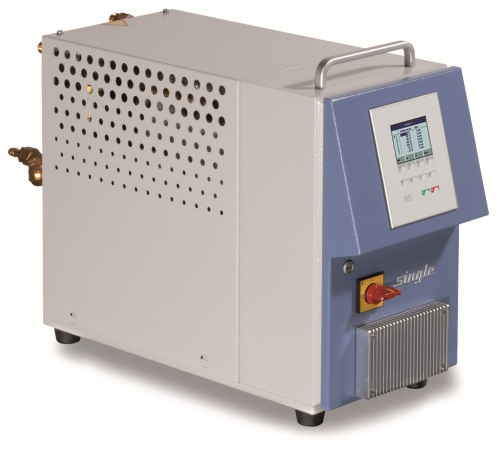
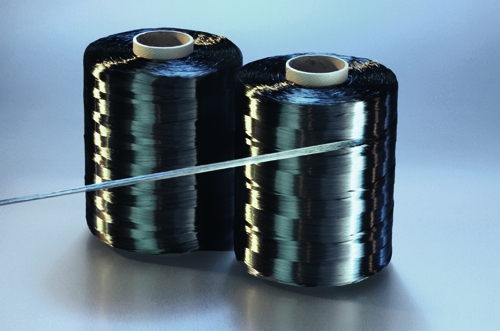
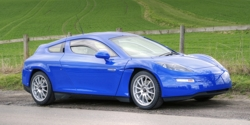
3A Composites Core Materials Stand number N32 Website: www.corematerials.3AComposites.com
3A Composites Core Materials is unveiling the new BALTEK® SBC core material at the show. The company saus BALTEK SBC is a completely new grade of balsa end-grain core material featuring unprecedented quality and sustainability which are proven by its 100% FSC certification.
3A Composites Core Materials is part of 3A Composites, a division of Schweiter Technologies AG. It produces the AIREX® and BALTEK® branded products.
3B - the fibreglass company Business Suite D8 Website: www.3B-fibreglass.com
3B will highlight a range of sustainable composite end-use applications. These include the pultruded composite panels enabling the distinctive contemporary design for the Sheraton Hotel at Malpensa Arport near Milan, Italy. This application won the JEC Innovation Award in the Construction category.
3B, together with GASTANK Sweden AB and Greenes Group in the Netherlands, were also runners up in the JEC Innovation Awards’ Transportation category. A car supplied by Greenes Group fitted with CNG tanks made with 3B HiPer-tex™ fibre will be displayed at the show.
3B will also highlight a solution for water and sewer applications which incorporates 90% recycled materials.
One of Europe’s major manufacturers of fibre glass reinforcements, 3B has also developed a presence in Asia and North America to locally support its customers’ global expansion. 3B provides reinforcement solutions based on corrosion resistant Advantex® glass and HiPer-tex™ glass. Its product portfolio includes chopped strand and direct rovings for both thermoplastic and thermoset composites, continuous filament mat and wet chopped strands specifically engineered for nonwoven applications.
ABMACO (Brazilian Composite Materials Association) Stand number B17 Website: www.abmaco.org.br
The Brazilian Composite Materials Association (ABMACO) is aiming to strengthen the image of the Brazilian industry and generate business opportunities worldwide. In a 54 m² area titled 'Brazilian Composite Island', ABMACO will showcase products including an electricity pole, wind turbine blade, pipe for sanitation, street furniture, components used in petrochemical plants and several automotive parts. Produced by Cogumelo, Edra, Edra Equipamentos, MVC Soluções em Plásticos/Pôle de Plasturgie, Petrof isa, Piatex and Tecnofibras, the parts were selected by ABMACO based on criteria such as innovation and commercial viability.
ABMACO will also launch the book, Brazilian Composites Market. The publication includes a survey of the Brazilian composites market, as well as examples of the applications and data about its sustainability.
A recent market survey from Maxiquim indicates that the revenue of the Brazilian composites sector in 2010 grew 15.1% to total US$1.55 billion. For 2011, Maxiquim forecasts a revenue of US$1.67 billion (+7.9%).
Aerovac Stand number T50 Website: www.aerovac.com
Richmond Aerovac will be exhibiting alongside parent company Umeco plc and other companies in the group. It will be highlighting a range of new products, including:
- AB10UHA, a heavyweight breather fabric which yields ultra-high airflow performance at high pressure and temperature conditions (100 psi and 205°C) and can be used in oven or autoclave processing for moulding complex shapes with tight radii, replacing the requirement for two layers of breather fabric.
- Aerofix 3 spray adhesive, which has been developed to hold core materials, glass and carbon fabrics in place in the mould during resin infusion. It does not compromise the mechanical performance of the laminate, or the polymerisation of (polyester and vinylester) resin systems.
- Burstguards are padded sheets of rubber which have been developed to prevent accidental bag bursts when loading onto autoclave trolleys. They are filled with a bespoke, high temperature cushioned material which can withstand temperatures in excess of 200°C. They not only eliminate the risk of accidental damage to the bagging film, but also the use of stock breather as a protective pad.
- VMS2 is a resin barrier vacuum line which reduces the risk of dry spots and incomplete wet out during the infusion process. It also simplifies the infusion network design and can eliminate any resin waste. VMS2 has since proved a great success with customers, including Southern Wind Shipyards in South Africa. Nic Prentice, Head of hull and deck construction at SWS, said VMS2 gave the company “a 15% labour saving in setting up the infusion network, a 25% resin saving, visually improved laminates and test results showing the laminate properties to be 67% fibre and 33% resin content.”
Airborne International Stand number P45 Website: www.airborneinternational.com
Airborne Composites in the Netherlands and Spain develop and build composite products on an industrial scale. Airborne Composite Tubulars supplies spoolable thermoplastic composite pipe to the oil and gas industry.
Airborne works in high-end industrial markets where maximum performance and critical applications go hand in hand. Failure is not an option, while at the same time the competitive edge of the client is determined by the ability to embrace technological innovation. The company is active in the aerospace, oil and gas, high-end machines, antennas and marine market. Within these markets differentiating technologies are used to produce innovative composite products on an industrial scale.
Airtech Advanced Materials Group Stand number M64 Website: www.airtech.lu
Airtech Europe has installed a new CNC ply cutting machine as part of its commitment to help reduce customers' labour costs. The machine has a 216 m2 cutting bed and enables Airtech to custom cut and kit products to fit perfectly in the mould tool. This can significantly reduce moulding cycle times and improve part quality.
By providing custom vacuum bags and kits for a wide variety of parts, Airtech helps customers reduce labour costs and speed up production. Savings vary depending on the complexity of the component being manufactured and the customers' internal labour rates, but cost reductions are achievable.
Airtech's new Beta Prepreg for composite tooling is based on benzoxazine resin and toughening technology. It can be stored at room temperature for up to 6 months with no loss of tack and delivers superior laminate properties compared to conventional epoxy and BMI systems. High glass transition temperature (218°C) and service stability at high temperature ensures long tool life.
Also new from Airtech is TB G48, a cost effective high temperature carbon fibre tooling board for mould support, jigs and fixtures, which is reported to reduce tooling cost and improve performance.
Securlon L750 vacuum bag film and WL3700 P16 release film are new inexpensive products for wind energy, marine and other applications where good performance is needed at lower cost.
Airtech is a manufacturer of processing materials for the composites and tooling industries. It offers auxiliary materials for the vacuum bagging, wet lay-up and resin infusion processes. The product range includes vacuum bagging films, release films and release liquids, pressure sensitive tapes, peel plies, breathers and bleeders, vacuum bag connectors and hoses, and tooling materials.
Anaglyph Ltd Stand number V80 Website: www.anaglyph.co.uk
Anaglyph Ltd is releasing Version 4.1 of its Laminate Tools software integrating the design, analysis and manufacture of composite structures. It complements existing CAD systems and/or FEA environments, with native support for NASTRAN and ANSYS that ensures wide compatibility in the analysis of composites. Laminate Tools helps optimise and manufacture exactly what is being designed, and saves valuable team time.
The new version introduces new features in the Geometry, Design and Manufacture modules to improve the Laminate Tools - CAD interface, including a new embedded SolidWorks environment allowing easy ply definition.
Anaglyph provides engineering consultancy services in all aspects of industrial design, analysis and manufacture. The company’s in-house expertise is mainly on advanced structural applications, in particular those employing composite materials. Starting with strictly software applications, Anaglyph has extended its product range to include an innovative hardware system for hand lay-up ply placement, PlyMatch.
BASF Stand number G17 Website: www.basf.com
BASF will present two new products for wind turbine blades:
- RELEST Wind RepKit is a solution for rotor blade repairs for onshore and offshore wind energy plants. Along with all the materials and tools necessary for blade repairs, the kit also comprises an extensive training seminar. The kit has been designed for stationary use on the ground or on wind turbines.
- RELEST Wind ProcessCoat is a coating for rotor blades which protects against erosion and UV radiation.
BASF will also highlight novel composites based on polyurethane (Elastolit® R) and epoxy (Baxxodur®) for the automotive sector. In the RTM process these two systems offer reduced cycle times, with demoulding times of less than 5 minutes. They function by innovative curing mechanisms which means that they can be processed much longer than conventional products and still cure much faster if required. As a result, the fibres can be impregnated perfectly with these low-viscosity resins. Both systems are self-releasing and suitable for processing on common high-and low-pressure equipment. Components made from these materials show excellent thermal and mechanical properties.
By combining fibre reinforced structural components with lightweight polyurethane foam cores, high quality composite structures that feature excellent specific component stiffness and good isolating properties, plus low weight, can be obtained.
Bayer MaterialScience Stand number P14 Website: www.bayermaterialscience.com
Bayer MaterialScience has developed a technology for the use of fillers in reactive polyurethane (PU) blends. With the Solid Injection by Air Stream (SIA) method, the solids are transported in a gas stream and only injected into the mixing chamber during the blending phase.
Bayer reports that this method opens up new possibilities for the use of composite materials, regardless of whether they are hard or soft, or if the polyurethane is a solid or a foam. One possible area of application is adding flame retardants to polyurethane parts, which is required for a variety of applications.
With today's batch method, fillers are often added to the polyol component before this is blended with the isocyanate component in the high-pressure mixing head and reacted. There are two disadvantages to this method: first, the system components must be adequately protected against wear caused by the solid; and second, large or mechanically sensitive filler particles limit the options.
With the SIA technology, the components (polyol, isocyanate and filler) are added separately and not blended together until in the mixing head. This avoids the disadvantages of the batch method. The plant technology was developed in cooperation with Hennecke GmbH.
The method enables the use of very light or heavy fillers, or also the combination of different types. Even reactive substances or particles with porous surfaces can be used. This significantly reduces the probability of changes to the fillers and the wear of plant components due to abrasive or corrosive additives. The technology also makes it possible to vary the filler content within a layer or between different layers, such as in a sandwich composite, for example. Bayer operates a pilot plant employing the method in Leverkusen.
Cannon Stand number H58 Website: www.cannon.com
Cannon will present its latest developments in composites, polyurethane and thermoforming technologies:
- The ESTRIM (epoxy structural reaction injection moulding) technology, for the replacement of conventional RTM process, with fast-demoulding high pressure injection of epoxy resin formulations. The new E-System, a three-component high pressure dosing unit for epoxies, will be introduced.
- The range of automatic preformers for the preparation of carbon and glass fibre preforms used for resin impregnation and injection technologies.
- Solutions for the wind generation industry: the Epoxy DX dosing machines for epoxy resin infusion in large bladez; dosing machines for polyurethane inserts to replace the use of balsa wood; dosing machines and presses for DCPD (DiCycloPentaDiene) resins to produce large, thin, high-modulus structural parts without glass reinforcement.
- Automated assembling technologies for the production of large composite aircraft parts.
- Co-injection and reinforced spray technologies for polyurethanes.
- Compression moulding presses for SMC GMT and RTM up to 3500 ton.
- The latest industrial thermoformers of Cannon Forma, equipped with halogen heating lamps, computerised zone-control of heating, patented adjustable plate systems for minimum set up time and elimination of reduction plates.
- The latest Belotti’s 5-axis CNC machining centre for the milling of composites and plastics.
COIA GmbH Stand number F31 Website: www.coia.de
COIA GmbH focuses on UV curing technology. Since 1995 the company has produced glass fibre reinforced plastic (GRP) rods with high speed UV pultrusion systems designed and manufactured by COIA. Its GRP UV pultrusion lines, made in Germany, cover three main types/diameter ranges:
- CO-SM 500 for production of 0.25-0.50 mm GRP;
- CO-SM1000 for production of 0.25-1.00 mm GRP; and
- CO-SM3500 for production of 1.00-3.00 mm GRP (see picture).
COIA also offers UV curable resins for the GRP processing, as well as a range of UV curable materials for colouring, coating and bonding.
Cray Valley Stand number F57 Website: www.crayvalley.com
Cray Valley and its partners Mariskone, Crepim and Diseño e Innovacion have won a 2011 JEC Innovation Award in the Materials category for its FireBlock fire resistant resins and gel-coats.
FireBlock resins and gel-coats are said to be easy to use in many processes, including RTM, hand lay-up, spray-up, pultrusion, and BMC. They make it possible to meet the highest ratings of most fire standards, including the future European railway standard (TS EN 45545) with a HL 3 rating, the French and Spanish standards with a M1F1 rating, and ASTM E 84 with a Class 1 rating.
FireBlock technology is part of the Total group's 'Total Ecosolutions' programme as a result of its reduced energy consumption and reduced greenhouse gas emissions as compared to standard fire retardant composite used in railway rolling stock. FireBlock is also halogen-free. A life cycle analysis is available on request.
Delcam Stand number R37 Website: www.delcam.com
Delcam will demonstrate the latest developments in its PowerMILL software for the programming of machining by robot at JEC. The latest version of its PowerINSPECT inspection software will also be on show, with demonstrations on a FARO Fusion inspection arm and a Creaform HandyScan.
The robot machining demonstration will use a KUKA robot, a combination that has proved successful for Delcam customers such as marine manufacturer Southern Spars. This is one of many applications where a robot has provided a lower-cost alternative to machine tools for the manufacture of larger composite components.
The new robot machining interface in Delcam’s PowerMILL CAM software has made it easier to program robots for a much wider range of applications. The ability to program the robot offline from 3D CAD data is faster and more efficient than the 'teach and learn' approach that is often used to create instructions for the equipment. This easier programming method is allowing composite manufacturers to take advantage of the many potential benefits of using robots. Firstly, the cost of installing a robot is far less than the price of a large machine tool with a similar working envelope. In addition, the flexibility of the robot means that complex operations can be carried out in a single set-up, cutting production times and reducing the number of fixtures needed.
Robots do have disadvantages – they struggle to machine harder materials and cannot match the tolerances possible with modern machine tools. However, they can be used successfully in any area where softer materials need to be machined to accuracies of tenths of a millimetre. This can be more than adequate for components that might be several metres in length, as is often the case for composite tooling and parts for marine, aerospace, motorsport and rail applications.
Delcam’s PowerINSPECT is a hardware-independent inspection software. It combines the ability to work with all types of inspection device with a comprehensive range of inspection routines for taking simple measurements, for inspection of geometric features and for analysing complex 3D surfaces. The resulting reports present detailed information in an easy-to-read format that can be understood by all engineers not just inspection specialists.
Reporting in PowerINSPECT is now more flexible with the 'Quick Report' option. This allows users to add headers and footers to any image taken from the full report in order to create a single page graphical representation of the inspection. Faster interpretation of the data allows errors to be identified and rectified faster, so reducing costs.
Improvements to the handling and alignment of point clouds make it easier to deal with the large data sets generated when using laser-line probes. Emphasis on critical areas of the part alignment can now be carried out by selecting the desired region of the point cloud and associating it to the CAD. This allows priority to be given to the selected regions of the point cloud rather than treating every point equally, thus giving more control over the alignment.
Increased capabilities in CAD formats mean that more and more data is becoming available to the inspector in these files. GD&T is the most common Model-Based Definition format and PowerINSPECT now supports GD&T in Unigraphics as well as the previous support for GD&T in CATIA. This lets the user create GD&T items directly from CAD. Improved handling of the tree structure in CATIA files has also been implemented, allowing for easier navigation of the CAD data within assemblies.
Dieffenbacher GmbH + Co. KG Stand number D46 Website: www.dieffenbacher.de
Dieffenbacher supplies presses and automated production lines for sheet moulding compound (SMC), glass mat thermoplastics (GMT) and long fibre reinforced thermoplastics (LFT), as well as process technology for forming fibre reinforced plastics.
Dieffenbacher´s research and development into press systems for moulding LFT is determined by the requirements of the automotive industry. The LFT-D direct process technology enables the production of lightweight automotive parts. Dieffenbacher offers the complete system for automotive production, including compounding extruders, the press, automation, part finishing, and tool change for SMC processing, for body parts as well as for GMT and LFT-D for the manufacturing of semi-structural or structural components.
Dieffenbacher developed the D-SMC process in a consortium together with DSM and the Fraunhofer ICT. The technology of direct compounding bypasses the costly steps of wrapping, storing and logistical handling of the SMC semi-finished part which used to be required. The precisely reproducible process and direct onward processing of the semi-finished part guarantees stable production. As well as economic benefits, the D-SMC process contributes to technical improvements in Class A quality components. The material composition can be adapted precisely to meet different requirements.
Dieffenbacher believes the high pressure resin transfer moulding (HP-RTM) process will play a key role in automotive production in the future, where it will be used for manufacturing carbon fibre composite components. In cooperation with KraussMaffei, Dieffenbacher has developed the complete process and required machinery, from preforming to finishing, for the production of RTM parts. Dieffenbacher is offering global turnkey solutions for HP-RTM processes from a single source.
Fontijne Grotnes Stand number X42 Website: www.fontijnegrotnes.com
Fontijne Grotnes has more than 80 years of experience manufacturing hydraulic platen presses. The company's hydraulic laboratory platen presses are being used in the polymer processing, rubber, laminating / wood and aircraft industries. They are mostly used for R&D and quality control in accordance with ASTM and ISO. Fontijne Grotnes presses can be used to produce thermoplastic samples for R&D and quality control. The bigger Fontijne presses can be used for small production. High temperature presses up to 450°C can be used to prepare samples like PEEK, PPS, PEI and PEKK. Fontijne Grotnes also offers presses to prepare thermoplastics under vacuum. The presses unit can be put under vacuum conditions manually or integrated in a PC control system. A control is built into the press to ventilate the vacuum chamber after pressing. The company can offer vacuum presses in the range of 50-1000 kN, with heated platens of 225-500 mm.
Fontijne Grotnes recently developed a new press control system, Lab Pro-View. This PC control system features a new process preview which makes it possible to see directly what has been programmed. The values set (temperature, pressure etc.), the program commands, and the actual press cycle, are shown. Continuously keeping an overview of the entire process will lead to reduced costs due to time and material savings.
Another feature of Lab Pro-View is the command recipe control, based on the former PC control system, Lab2000. This enables an easy way of programming for both simple and complex processes.
FORMAX Stand number P39 Website: www.formax.co.uk
JEC 2011 will see FORMAX, a global manufacturer of lightweight carbon and specialist composite reinforcements, announce further investments as well as showcase its portfolio of carbon, glass and aramid reinforcements.
Whilst 2010 was a difficult year in many composite markets, FORMAX is expected to confirm a 20% sales growth and increased profitability, with over 6 million m2 of its material having been manufactured and shipped worldwide to service the wind energy, marine, automotive, sports and industrial sectors.
Due to this rapid growth, FORMAX will announce an investment of £1.5 million in new machinery for 2011. Karl Mayer’s latest carbon multiaxial machine will be added to the existing FORMAX facility in April. This specially developed Carbon Malitronic® has a variable width from 1000 mm to 1600 mm. It will allow FORMAX to offer unique new fabric constructions such as lightweight 0/90 fabrics, ply orientations from ±30º, and balanced biaxial fabrics (+/-/+) from 200 g/m2 that ensure truly symmetrical fabrics.
FORMAX will also be adding a laminating line that combines surface veils with existing fabrics for applications that require demanding surface finishes, such as Class A surfaces for automotive panels.
On its exhibition stand FORMAX will showcase its portfolio of advanced reinforcements including: lightweight carbon fabrics for automotive and industrial applications; specialised glass fabrics for the marine and industrial sectors; and heavyweight glass fabrics for infusion processes.
Guang Wei Composites Co Ltd Stand number Q32 Website: www.guangweicomposites.com
Chinese prepreg supplier Guang Wei Composites will announce two developments – the recent awarding of the Chinese patent for its wind energy semi-preg materials, and the opening of a new RMB30 million research and development facility.
The Guang Wei semi-preg materials are constructed from layers of dry reinforcement fibres and a catalysed resin matrix film. The fibrous reinforcements in the semi-preg materials are supplied to the end-user in a non-impregnated form meaning that it is only during the final curing process that the fibres and resin matrix film are combined and the laminate ply wets out. The dry reinforcement layers allow the laminate stack to release air between the plies without debulking, which ensures that cured laminates reliably exhibit a very low void content with simple vacuum bag processing, offering the customer significant benefits in quality control. Guang Wei’s semi-preg materials are ideally suited to the serial manufacture of large composite components, in particular, the critical sections of wind turbine blades where exceptional laminate quality and mechanical performance is required.
Guang Wei has invested RMB30 million (€3.3 million) in a new state of the art R&D facility. The 1000 m2 facility will house 40 trained technicians who will focus specifically on composite material product developments such as surface coatings, fire retardant products for aerospace applications, adhesives and lightweight carbon fibre products for the marine and sports sectors, and heavyweight materials for the wind and infrastructure markets.
The facility will be located at the Guang Wei Composites headquarters in Weihai, Shandong, and will open in late January.
Guang Wei will showcase of a number of products on its JEC stand, including semi-preg, and dry unidirectional carbon reinforcements.
Heraeus Noblelight Stand number R80 Website: www.heraeus-noblelight.com
Heraeus Noblelight develops and manufactures infrared emitters and systems for industrial heating processes. With a wealth of experience encompassing more than 3000 different heating processes, the company can match its emitters to precisely to meet customer needs in terms of spectrum, power, length and shape. In contrast to conventional thermal processes, infrared transmits large amounts of energy in a short time. This heat is used exactly where it is required and only for as long as it is required for a particular process. This can lead to energy savings of up to 50%.
|
The Wind Explorer pilot vehicle is a two-seated electric vehicle that weighs just 200 kg and has a range of 400 km per battery charge. The bodywork is a sandwich structure based on carbon fibre composite with ROHACELL® polymethacrylimide (PMI) foam core material from Evonik Industries. Its lithium-ion batteries, another Evonik technology, are charged by a mobile wind turbine or (in exceptional cases) conventionally from the power grid. German extreme sports enthusiasts Dirk Gion and Stefan Simmerer made a 17-day journey across Australia in January 2011 in this vehicle. They could recharge flat batteries using either a mobile wind turbine or from the grid in the usual way, depending on the amount of wind available. The wind turbine and a 6 m-high telescopic bamboo mast are set up within 30 minutes. The Wind Explorer was propelled partly by parasail-style kites in addition to wind power, achieving in this way a maximum speed of about 80 km/h on the approximately 4900 km stretch from Albany on the Indian Ocean to Sydney. Only in exceptional cases did the drivers have to use electricity from conventional sources. |
Heat plays a central role in forming and processing plastics, especially thermoplastics. Heating can also be used to temper, harden, glue and dry plastics. Heating processes are even used to separate plastic waste. Infrared radiation is a key technology in plastic processing and offers many possibilities for heat transfer.
Profit from the acknowledged Heraeus quality – the proven twin tube design with a unique length of up to 6.5 m; contoured emitters, which are shaped to match the geometry of the work piece; and the new QRC® emitter, with its nano reflector for stable heating processes under aggressive ambient conditions.
Huntsman Stand number G65 Website: www.huntsman.com/advanced_materials
Huntsman has announced its involvement in a project that showcases the possibilities of building a concept electric car – the ‘U-Box’ designed by D” in France – using environmentally sustainable components. The car will have its first showing at JEC.
The U-Box incorporates materials including renewable flax and basalt fibres in combination with new toughened resins, as well as halogen free, fire resistant resin. Flexible Organic Light Emitting Diodes (OLEDs) have also been integrated in the composite structure. In addition to this, Huntsman supported by the UK company NRG Wheels Ltd, equipped the vehicle with composite wheels and provided composite bonders offering high strength, flexibility and temperature resistance.
For the production of wind blades and other large composite parts, Huntsman has developed two new resin systems. The first of these resins provides very low viscosity, while the second, Araldite® LY 1568 / Aradur® 3489, offers low build up of exothermal temperature during curing. For this market, Huntsman has also introduced a new tough and crack resistant adhesive system, Araldite® AW 4856 / Hardener HW 4856.
Huntsman will also be introducing new formulated systems for high performance epoxy prepreg and infusion systems for structural and tooling applications.
Other products on show include RenPaste® 4688, a seamless modelling paste for quick prepreg tool build up on high output automated equipment.
The polyurethanes division of Huntsman will introduce VITROX® composite resin – a new resin range that can be used in fast cycle, resin transfer moulding (RTM) for high volume, automotive and mass transportation parts production.
ITW Plexus Stand number J57 Website: www.itwplexus.co.uk
ITW Plexus, the European structural adhesives manufacturer, will be sharing its stand with its newly formed wind energy group, ITW WindGroup.
Plexus will be highlighting the benefits and savings that transportation, marine, automotive and engineered construction manufacturers are achieving by using its high performance range of methacrylate adhesives to bond many dissimilar materials. These adhesives are facilitating faster and easier assembly, and produce durable high-strength bonds to virtually all resins and gel-coats, as well as most thermoplastics and metals.
Unlike marine putties, Plexus adhesives chemically fuse FRP and composites. They produce bonds so strong that the substrates will delaminate before the bond fails. Because they eliminate surface preparation and cure rapidly at room temperature, Plexus adhesives simplify and shorten assembly times, taking cost out of the finished product.
The adhesives are also being used to speed up production, reduce component weight and increase durability. As an example, in boat building applications, problems caused by having wood beneath the water line have been eliminated by the introduction of composite stringer and liner assemblies.
The new ITW WindGroup manufactures and supplies adhesives, tapes, sealants, foundation systems, coatings and other solutions to the wind energy market. During the show the WindGroup will be demonstrating a range of products which provide value to the production process of blades and other composite structures of the wind turbine and related field maintenance and operations. This range consists of tacky tapes, structural adhesives and sealants, blade cleaners, leading edge protection tapes and coatings and Teflon release films.
Karl Mayer Stand number T66 Website: www.karlmayer.de
Karl Mayer will showcase its multiaxial and biaxial warp knitting machines. The new Malitronic® MULTIAXIAL, C&L, 100" is intended for the cost-effective production of light carbon multiaxial structures.
The Karl Mayer CFRP Competence Centre is a development and manufacturing department for lightweight construction solutions for in-house applications and also for external parties. Today’s high-performance warp knitting machines are not possible without FRP parts. Karl Mayer machines equipped with composites provide customers a competitive edge, as a result of increased performance and high temperature stability.
The CFRP Competence Centre supports all kinds of work, from very complex profile parts with a length of up to 7 m with predefined temperature stability produced in volumes of more than 10 000 pieces per year, to highly rigid machine levers made of CFRP and aluminium, leaf springs made of glass fibre reinforced plastic with an extraordinary long service life, as well as lightweight push rods with integrated functions, made of carbon and glass fibre reinforced plastic.
LACH DIAMANT Stand number J64 Website: www.lach-diamant.de
LACH DIAMANT produces diamond tools for machining (milling, drilling, cutting, deburring) of composite materials. It will be exhibiting polycrystalline cutting tools (PCD) and diamond tools for the processing of all composite materials, including GRP and CFRP, as well as aluminium, ceramic and graphite.
For the first time, the company will display it patented innovation Cool Injection for PCD milling cutters and step drills. With Cool Injection, the coolant (liquid or air) reaches the cutting edge directly through the surface of the PCD tip; the hot chip produced during cutting is fractured abruptly by the targeted coolant stream and can be disposed of immediately.
PCD cutting tools are used in the aircraft, automotive and the accessory industries as well as by manufacturers of wind turbines.
Lucintel Stand number C57 Website: www.lucintel.com
Lucintel will be speaking at the 2nd Innovative International Composites Summit (IICS), sharing key insights on the natural fibre and resins market. During the Bio Based Materials forum on 30 March, Vice President of Consulting for Lucintel, Norman Timmins, will present a paper titled: Natural Fibre and Resins: Boom or Bust? He is also the moderator for the forum.
According to Lucintel, the global natural fibre composites market reached US$2.1 billion in 2010. Current indicators are that demand for natural fibres and resins will continue to grow rapidly in the global composites industry. Over the last 5 years the use of natural fibre composites, such as flax, hemp and wood plastics, has increased substantially in the construction and automotive sectors, with electronic, electrical and sporting goods becoming emerging market segments. The natural fibre composites market is expected to grow with a CAGR of 10% over next 5 years (2011-2016). Some of the positive factors which have the ability to drive natural fibre composites market growth above current projections are: low cost versus petroleum based products, light weight, and the fact that they are eco-friendly reinforcement alternatives.
Lucintel is also giving a technical presentation on the 30 March in the open forum titled: Global Composites: Key Trends & Market Opportunities for Strategic Growth.
At Lucintel's stand visitors will have the opportunity to see the latest composites and renewable energy case studies and discuss their market research or strategic consulting needs in more detail.
Magnum Venus Plastech (MVP) Stand number T32 Website: www.mvpind.com
In 2010, Magnum Venus Plastech introduced the Flex Molding Process which is designed to make the move to closed moulding easier. The counter-mold itself has become a simple to make, reusable flexible membrane.
MVP will conduct live demonstrations of the Flex Molding Process, including a infusion of a part with the reusable membrane, using the Patriot™ Pro Innovator Injection System.
One of the cornerstones to making an affordable, efficient reusable membrane is the Patriot™ Duo 1:1 Silicone System. Features of this system include:
- proven Patriot™ technology;
- gravity feed tanks that provide positive accurate meter dispense;
- proven to dispense multiple silicone materials efficiently;
- portable rugged design;
- disposable mixers for quick clean-up;
- fluid section and powerhead modularity allows for quick change to accommodate 1.5 lbs (0.6 kg) to 6 lbs (2.7 kg) output/flow rates; and
- internal mix Pro Gun with splatter nozzle specifically designed for consistent, controlled spray of silicone materials.
The versatile Patriot Duo 1:1 Silicone System can be used to pour and spray silicone materials, and also as an injection system for making silicone parts. In the last nine months, this system has proven itself in demonstrations and installations around the world.
In addition to the Flex Molding Process Systems, Magnum Venus Plastech will also showcase several speciality systems including the new MicroPro Proportioner, ideal for pultrusion manufacturing, and the Universal Proportioner.
Nidaplast Stand number J50 Website: www.nidaplast.com
Polypropylene honeycomb specialist Nidaplast is developing new applications for nidaplast 8 honeycomb core for the transport and haulage industry (utility vehicles, trucks, ambulances).
Honeycomb with a skin layer (in polyester, wood, aluminium) is increasingly used to replace plywood. One panel of nidaplast with polyester skin can, as an example, save over 5 kg/m² compared to traditional plywood. For rigid 13 m trucks, this saves over 500 kg per trailer.
Traditionally used in construction, nidaplast 8 has many advantages for transport applications. It is rot-proof and vibration-dampening, and it is easy to install. nidaplast 8 is also ideal for sanitary vehicles transporting foodstuffs, ambulances and horse boxes – all vehicles where intensive cleaning is usually required. Honeycomb is also very flexible and can be adapted to the finished product’s shape.
Owens Corning Stand number R20 Website: www.owenscorning.com
Owens Corning will showcase its OCV™ Reinforcements, OCV™ Technical Fabrics and OCV™ Non-Woven Technologies business units. Highlights will include
- OC HiLight™ reinforcement, a new multi-end roving developed for the translucent panel market segment;
- Ultrablade™ fabrics for producing stronger, stiffer and lighter composite wind turbine blades;
- the company’s range of high performance reinforcements for applications in aerospace, ballistics, industrial and pressure tanks; and
- a non-woven veil for batteries utilised in the automotive and transportation industry.
Owens Corning will also be showing its Twintex® co-mingled glass and thermoplastic reinforcements for several industry applications, including hot water boiler tanks and containers, and residential and industrial building structural panels.
For corrosive environments, Advantex® E-CR glass fibre reinforcements, made with a proprietary boron- and fluorine-free process that results in a higher performing fibre and a significantly smaller environmental footprint compared with standard E-glass processes, will be on display.
Oxeon Stand number T23 Website: www.oxeon.se
Founded in 2003 in Sweden, Oxeon produces spread tow reinforcements designed to increase the mechanical performance and reduce the weight of composite products. Oxeon produces TeXtreme® Spread Tow Fabrics and TeXero® Spread Tow Tapes.
This year at JEC, Oxeon will present its next innovation that will enable it to provide a more complete range of products for optimised composite reinforcement solutions.
Oxeon has increased production capacity substantially to secure future growth. The company has also increased its presence in North America.
Cars using TeXtreme won both the team and the driver championship in the Formula 1 series. Bauer's new ice hockey stick SUPREME TOTALONE and golf manufacturer Fujikura's new Blur shaft have both benefited from Textreme. Fanatic Windsurfing has released its new premium board FreeWave TeXtreme.
Oxeon continues to cooperate with customers to produce tailor-made TeXtreme fabrics optimised for specific applications.
Polymer Technologies Pte Ltd Stand number R82 Website: www.polymertec.com
Polymer Technologies will showcase Polynanosil, a mixture of homogeneous dispersed elongated silica nanoparticles in epoxy resin.
Polynanosil is reported to provide significant improvements on key properties of cured epoxy resin such as tensile modulus, flexural modulus and fracture toughness. A uniform dispersion of the oval shaped silica nanoparticles with aspect ratio > 1 and diameter below 100 nm is obtained within the resin matrix. This shape of silica offers enhanced reinforcement of the resin over spherical particles. The silica nanoparticles are surface modified to obtain a strong silica-resin bond formation and prevent the aggregation of silica particles. Only few percentage of the nanoparticles are required to form a high strength composite material and therefore the viscosity of the product is extremely low and applicable for various applications.
Polynanosil is suitable for use as adhesive, coating and in the composition of composite structures in various industries, including: aerospace and aircraft; automobile and transport; civil infrastructure; sporting goods; military; and energy.
Improvements in interlaminar fracture toughness and overall mechanical properties are achieved by incorporating Polynanosil into fibre reinforced composites. Due to the low viscosity of Polynanosil, it can easily penetrate through layers of carbon or glass fabric and thus is applicable to various types of moulding systems.
Quantum Composites Inc Stand number R39 Website: www.quantumcomposites.com
Quantum Composites Inc (QCI) is a developer and supplier of structural and semi-structural thermoset materials and parts solutions. QCI’s Engineered Structural Composite (ESC) materials include carbon or glass reinforcement in epoxy, phenolic, vinyl ester, BMI and polyimide resin matrices, supplied under Lytex® AMC® QC trade names.
QCI provides design and parts solutions in ESC materials to aerospace, defence, automotive, medical, safety, energy and industrial markets. QCI’s capabilities include materials development, design, applications and tooling engineering.
QCI is part of The Composites Group that also includes Premix Inc, a supplier of composite solutions based in North Kingsville, Ohio, USA, and Hadlock Plastics of Geneva, Ohio, a custom moulder and finisher of high-quality engineered composite products.
Quarzwerke Stand number U39 Website: www.hpfminerals.com
The Quarzwerke Group specialises in mining and processing of various mineral raw materials. Its products are used in polymer applications such as paints and lacquers and plastics, and also in the glass, paper, foundry, ceramics and building chemicals industries. Because of the company's long-standing experience in the field of High Performance Fillers the new name HPF The Mineral Engineers emphasises its competence in customised filler solutions tailored to particular customer needs.
High performance fillers play a prominent role in the production of thermosets. Demands such as high strength and high thermal resistance can be met by means of functional fillers. In addition their use in the finished products brings about optically sophisticated, resistant surfaces. The company's high performance fillers are mineral powders with a high degree of chemical purity, very good chemical resistance and a very low binder requirement. They are widely used in reaction resins such as PMMA.
Units of various sizes are available at the company's refining plant for the processing of mineral raw materials, where minerals ranging from a few millimeters in size down to a few hundred nanometers can be crushed and surface modified.
Scott Bader Stand number H46 Website: www.scottbader.com
Scott Bader is launching its Crystic® Permabright high performance gel-coat which is claimed to set a new standard for long term UV weathering performance by providing significantly improved colour stability. It will also be of use to any manufacturer of composite parts where retaining a high level of aesthetic quality in exposed gel-coated surfaces is critical, for example, in marine, building, wind energy and land transportation products.
The comparative long term UV weather performance data for Crystic Permabright gel-coat against ISO and ISO/NPG gel-coats has come from accelerated QUV and Xenon testing and 12 months of Florida exposure. When comparing the delta-E colour change to even the best performing white ISO/NPG competitor gel-coat, Scott Bader’s new gel-coat outperforms it by over 40%. This means that even after 12 months exposure to the harsh conditions in Florida, it is very difficult to detect any colour change to Crystic Permabright with the naked eye.
Crystic Permabright can also be used below the water line (as part of a Crystic marine laminate system with VE 679PA skincoat) as the water uptake is very low and it is osmosis resistant.
On its exhibition stand Scott Bader will display the new Crystic Permabright spray and brush gel-coats along with other products for closed mould and pultrusion applications, including Crestapol® resins, Crestabond® structural adhesives, plus low smoke, fire retardant gel-coats and laminate systems with test approvals for a variety of building and land transportation applications.
Experts from Scott Bader will also be making three technical presentations during the show covering: the new unsaturated polyester gel-coat weathering performance technology; recent advances in fire retardant systems, focusing on urethane acrylates and intumescent technology; and the bonding of composites, plastics and metals with methyl methacrylate (MMA) adhesives.
SGL Group Stand number L25 and K19 Website: www.sglgroup.com
SGL Group will present carbon fibre-based product solutions designed for strategic growth industries, such as the automotive, aerospace and wind energy sectors. Exhibits will include products and applications covering the entire value chain – from the precursor, to carbon fibres and woven fabrics, braided performs and prepregs, to finished structural components.
“This year’s JEC provides clear evidence of the momentum in the area of material substitution towards new, innovative materials that make significant contributions to reducing CO2 emissions and preserving natural resources," says Dr Jürgen Köhler, Vice President of the Business Unit Carbon Fibers & Composite Materials. "Carbon fibre technology plays a key role, here and not only in the automotive sector. Our joint venture with the BMW Group marks a milestone for the future of lightweight construction in the automotive industry and beyond, since carbon fibre materials are being used for the first time in large-scale production.”
At JEC 2011, SGL Group is to premiere a carbon fibre-reinforced plastic passenger cell for a BMW prototype vehicle, which will go into large-scale production in 2013. This passenger cell, known as the Life Module, is made entirely of carbon fibre reinforced plastic (CFRP). The carbon fibre and carbon fibre fabric used are manufactured by SGL Automotive Carbon Fibers (SGL ACF), a joint venture between SGL Group and the BMW Group, at the Moses Lake (USA) and Wackersdorf sites.
Sigmatex Stand number R32 Website: www.sigmatex.co.uk
Carbon fibre fabric manufacturer Sigmatex and its partners Bentley, NP Aerospace, QinetiQ, Composites Integration, Network Rail Infrastructure, Tony Gee & Partners, Pipex Structural Composites, Oxford Brookes University and University of Nottingham, have won the JEC 2011 Innovation Award in the Process category. The winning process is a novel offset weaving method to create a 3D woven generic nodal structure.
Novel weave styles and processes have been used to overcome specific manufacturing problems. The node is near net shape with additional functionality from interweaving carbon fibre threads. The offset weaving process can be used in other common designs where stiffness is a primary requirement. In conjunction with the weaving of the 3D structure, tooling design was also completed and infusion techniques developed for infusing the component.
Multiple units can be manufactured in a repeatable fashion using weaving technology. Lay-up times to manufacture truss structures are reduced by weaving features and multiple layers at once. Other features can be woven into the truss to improve strength and conformability. Other materials can be interwoven throughout the structure for structural health monitoring purposes.
There are thousands of railway, foot and canal bridges throughout Europe which are coming to the end of their life. The requirement for high-strength, corrosion-free structures that could benefit from this technology ispotentially worth millions of euros. The technology can also be used in other automotive and aerospace applications.
SINGLE Temperiertechnik GmbH Stand number X64-5 Website: www.single-temp.de
SINGLE Temperiertechnik GmbH is presenting its temperature control systems for the production of composite components. Temperature control of moulds provides composite producers with new potential for process optimisation and reduced energy costs.
Thermoset matrix materials cure as they react to heat. This reaction requires a substantial amount of thermal energy and temperatures mostly in excess of 100°C, often even up to 200°C. Cycle times can last from a few minutes for smaller automotive parts up to many hours, e.g. for wind turbine rotors. Active mould temperature control boosts process stability. Temperature control of these moulds with heat transfer media is a reliable and cost-efficient solution that has been widely established for many plastics processing methods.
“Even the high processing temperatures required by the composite industry do not eliminate the use of water as a heat transfer medium," says Karlheinz Gruber, Managing Director of SINGLE Temperiertechnik GmbH. "Water provides a significantly higher heat transfer capacity thanks to its heat conduction and heat transfer properties, which are superior to those of oil. SINGLE water-operated systems have been used successfully above the atmospheric boiling point for many years. The new hot-water temperature control solutions are particularly beneficial for manufacturers of composite components."
At JEC, SINGLE is presenting various temperature control systems with water as a circulating medium, some of which have a capacity for temperatures up to 200°C. A new, highly compact SINGLE hot-water temperature control system has a heating capacity of 6 kW, a flow rate of up to 30 l/min for temperatures of up to 225°C.
SINGLE reports that fluid-based temperature control of moulds has many benefits over the the use of autoclaves. Autoclaves make part handling very complicated, the process is highly time consuming, the quality of process control is not satisfactory and the cooling phase does not offer any room for active support. Hence, autoclave-based methods are very expensive. Fluid-based temperature control is also superior to inductive or electric mould heating methods for composite production. The need for complex equipment is a major disadvantage of inductive heating, as are the substantial costs and the lack of flexibility for different process configurations. Like electric heating, inductive heating does not allow for sufficient process control. For processes that require alternating temperatures, i.e. heating and active cooling, inductive or electrically heated moulds must be equipped with cooling channels for fluid-based temperature control anyway.
Active alternating temperature control SINGLE ATT (Alternating Temperature Technology) is recommended for processes that require fast temperature variations within the cycle time. Within seconds, ATT switches between two circuits with cooling fluid of different temperatures and actively heats or cools the mould.
TenCate Advanced Composites Stand number R46 Website: www.tencate.com
TenCate Advanced Composites' TenCate thermoplastic prepregs were used in an aircraft seat design that has won a 2011 JEC Innovation Award in the Thermoplastics category.
Cutting Dynamics Inc's composite aircraft seat uses TenCate's Cetex® PPS-based thermoplastic tape. A&P Technology and Ticona Engineering Polymers were also part of the team which developed the modular thermoplastic composite passenger seat frame for use in aircraft.
The seat frame consists of a match moulded seat back and seat pan that supports the seat cushion. TenCate's Cetex TC 1100 carbon fibre/PPS unitape is braided into a preform by A&P Technology, then shaped by Cutting Dynamics into a complex tube using a process capable of achieving high volumes.
Teufelberger Stand number M71 Website: www.teufelberger.com
CGB of Germany (stand number T80) and Teufelberger of Austria will be presenting a large tubular CFRP structure with an innovative metal connection T-IGEL®. This structure combines key technologies from both companies. With a diameter of 800 mm and a length of 40 m the tubular CFRP structure was fabricated on an integrated filament winding machine centre at CGB, a specialist in large composite structures. The company recently finished the artwork 'Mae West' in Munich that consists of 32 CFRP bars with a length of 52 m.
The composite showcase at JEC also incorporates a large integral metal flange for an easy connection to parts such as piping, or any other surrounding metal structures. This connection between the composite and the metal requires no adhesive bonding, no riveting, anchoring or bolting. A large array of pins sitting on the metal flange provides the bond between the wound composite structure and the metal flange. This joint is called T-IGEL and was developed by Teufelberger GmbH. It creates a fitted connection to the composite structure without reducing the structural integrity of the CFRP.
Toho Tenax Stand number Website: www.tohotenax-eu.com
Toho Tenax is developing a range of carbon fibre based products which will be integrated into the Tenax® product range. A new production line for Tenax® TPUD prepreg (ThermoPastic UniDirectional) is currently being installed at its production site in Oberbruch, Germany. It will be the first commercial TPUD line installed in Europe. The first production is planned for summer 2011. Tenax TPUD is reinforced with a specialised carbon fibre with tailored sizing for high temperature thermoplastic applications. The carbon fibre reinforced thermoplastic tape will be available in a wide range of widths (6.35-304.8 mm).
Toho Tenax has also developed a range of ThermoPlastic Consolidated Laminate materials (Tenax® TPCL) in partnership with Porcher Industries of France. The laminates are formed by consolidating several layers of woven carbon fibre coated with a thermoplastic polymer. These carbon fibre reinforced thermoplastic laminates can be used to create press formed components.
These new Tenax thermoplastic materials have already been selected for a variety of aerospace development and commercial programmes.
Umeco Composites Stand number T50 Website: www.umeco.com
Advanced Composites Group, JD Lincoln, GRPMS, Richmond Aerovac and IPM will be co-exhibiting under the Umeco Composites banner.
Umeco Composites, a division of Umeco plc, operates as two business streams:
- Umeco Composites Structural Materials (UCSM) businesses Advanced Composites Group (ACG), JD Lincoln and GRPMS provide a range of complementary products, services, design expertise and tooling solutions to the composites industry; and
- Umeco Composites Process Materials (UCPM) businesses Richmond Aerovac, IPM and Med-Lab serve global industries by supplying a range of vacuum processing materials and protective films, consumable short shelf-life hazardous aviation goods, and electronic equipment for testing fuels and heavy oils.
Each Umeco Composites business will display a range of exhibits. The main exhibit on the stand will be Delta Motorsport’s E-4 Coupé, an all-electric road vehicle which has been manufactured using ACG’s automotive prepreg products. ACG’s in-house moulding facility and KS Composites, Delta’s moulding partner, manufactured the prototype parts using ACG’s single-sided DForm tooling, a product which is custom-formatted to produce the optimum, paint-ready surface finish direct from the mould.
Building on the success of its BPS240 Body Panel System, which is widely used by supercar constructors, ACG will be exhibiting an example of its new MkII BPS in the form of a boot lid. ACG’s MkII body panel system de-skills and reduces laminating time, and facilitates the production of flat surface profiles with minimal print-through, thus minimising surface preparation and reducing costs at all stages of manufacturing.
An innovative tooling solution, jointly developed by ACG and Integran Technologies Inc, will be on display in the JEC Innovations area. The innovation combines the hardness, durability and damage tolerance of the nanometal coating with the lightweight, low thermal mass of a carbon fibre composite mould tool to deliver a durable and cost effective solution.
VISTAGY Stand number T45 Website: www.vistagy.com
VISTAGY Inc, a provider of industry-specific engineering software and services, will emphasise the growing role of composites in the automotive market.
The VISTAGY stand will feature the new Lotus Renault GP (LRGP) racing car, which was designed with FiberSIM composites engineering software, as well as Ian Goddard, LRGP's senior CAE engineer, who leads the composites design efforts for the company. There will also be demonstrations of FiberSIM 2010.
During the Composites Simulation Forum on 30 March, David Leigh Hudson, VISTAGY's director of product and market strategy for FiberSIM, will deliver a presentation entitled Simulations for Materials and Manufacturing Processes in Composite Intensive Industries. This will show how material and manufacturing specific simulations assist with assessing material deformation and degradation and how specific simulation types can assist product development.
There are many challenges in adopting structural composites for the high volume automotive market, reports Vistagy. These include the need to provide engineers with rapid and accurate structural and crash performance analysis; new design methods suitable for high rate composite manufacturing; tools for selecting and simulating new materials and processes; and cost and weight feedback early in the design process. FiberSIM answers these challenges with a variety of capabilities, including multi-layer material simulation-a significant factor in automotive composites that provides insight into the drapeability of non-crimp fabrics (NCF) and other new materials – as well as the corresponding manufacturing processes, such as forming.
"With the pressures to improve fuel economy and lower production costs, composites hold great promise for the automotive industry," says Ed Bernardon, VISTAGY's vice president of business development. "Our company recognises the challenges that the automotive industry faces when designing with new materials and processes. We are working with partners within the industry and investing in the engineering tools needed to exploit the full potential of these materials in high volume commercial vehicles."






